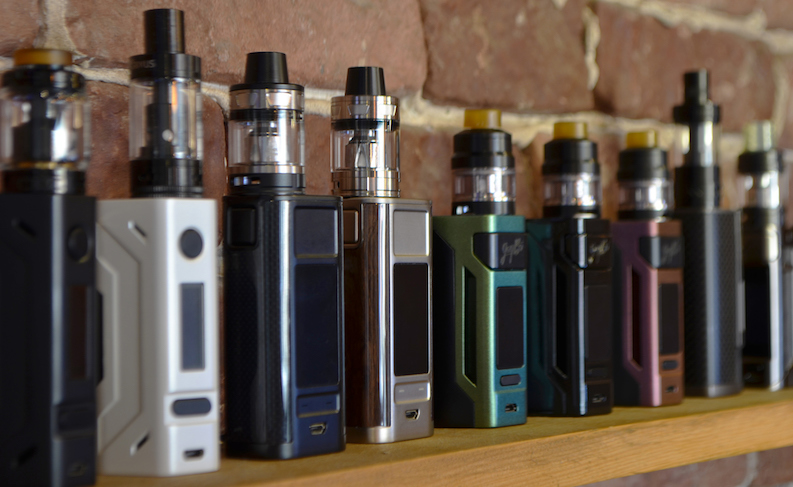
Former Commissioner Scott Gottlieb recently discussed the e-cigarette epidemic among American youth.
When the Brookings Institution hosted former U.S. Food and Drug Administration (FDA) Commissioner Scott Gottlieb to talk about his resignation, the Twitter audience was clamoring to know: Why was he wearing skull print socks?
Gottlieb responded, “I just liked them.”
Perhaps unsurprisingly given his whimsical taste in socks and strong social media following, Gottlieb spent much of his two-year tenure championing the health of American youth. Smoking is still the leading cause of preventable death in the nation, and Gottlieb maintained in his remarks at Brookings that this reality will not change unless young people are protected from nicotine addiction. But tackling a public health crisis of this magnitude, particularly when focusing on a vulnerable population, will not be easy for the agency, Gottlieb suggested, and it will require continued reliance on scientific data.
When asked about FDA’s failure to curb the popularity of Juul e-cigarettes before teen consumption reached “epidemic” levels, for instance, the former commissioner stressed that the agency just lacked the data early on to indicate the extent of the problem. After the most recent National Youth Tobacco Survey revealed 1.5 million more students were smoking e-cigarettes in 2018 than in the previous year, however, “we pivoted very quickly,” Gottlieb said.
Gottlieb pointed to the 2009 Family Smoking Prevention and Tobacco Control Act, which requires that, when evaluating the safety of products that might serve as lower risk alternatives to traditional tobacco, the agency weighs the likelihood that those products pose a risk to adolescent health more heavily than the products’ potential health benefits to adults.
As a result, although Gottlieb acknowledged that e-cigarettes can help adults transition off of combustible tobacco, he argued that growing youth use is a more pressing concern for the agency. As youth e-cigarette use continues to reach new heights, Gottlieb predicted that youth tobacco use will follow suit. “All the dramatic gains that we’ve made in reducing smoking rates in this country, particularly among young people, will be reversed as a result of these products,” he claimed.
Currently, FDA is taking a stance against flavored e-cigarette products—a policy which Gottlieb explained is based on historical evidence that flavors drive youth use in both tobacco products and their electronic counterparts. For example, he noted that although the Tobacco Control Act expressly prohibited flavored cigarettes, because cigars were not under FDA’s regulatory purview when the legislation passed, flavored cigars have survived on the market. Today, according to Gottlieb, cigars represent the “fastest-growing category of tobacco use among African-American teens.”
Gottlieb expressed a reluctance to impose blanket bans on e-cigarette products unless necessary to curb youth use.
For example, when tobacco company Altria declared that pod-based e-cigarettes, rather than e-cigarettes at large, were the real culprits of the youth addiction crisis, Gottlieb said that FDA was supportive. The agency commended Altria for volunteering to take pod-based systems off the market. Later, however, the company reversed its position, according to Gottlieb. In fact, without offering any public health rationale, Altria apparently invested significantly in pod-based flavored products, Gottlieb indicated.
Still, Gottlieb suggested that FDA is “open for business” to review e-cigarettes that the agency can support being on the market. These products, Gottlieb indicated, would help adult smokers quit using combustible tobacco without initiating youth smoking through marketing or other means. Under the Tobacco Control Act, manufacturers must file a premarket tobacco application for FDA to review and approve before introducing a tobacco product on the market. So far, however, not a single e-cigarette manufacturer has filed an application, Gottlieb said.
Gottlieb noted that the upcoming 2019 National Youth Tobacco Survey will be key in shedding light on whether FDA should take broader action against pod-based and cartridge-based e-cigarettes, rather than just flavored varieties. He indicated that, if necessary to initiate further restrictions to curb youth use, the Department of Health and Human Services and the White House would likely support FDA’s position.
Gottlieb compared the youth addiction crisis to the opioid epidemic, saying that the epidemic started with the addition of these drugs as medicinal products, but then progressed to recreational use and finally to heroin addiction for many individuals. Likewise, Gottlieb argued that, with e-cigarettes, “you’re going to see occasional use by children before you see regular use and before you see a progression onto cigarettes.”
In addition to FDA’s e-cigarette efforts, FDA has been drafting a proposed regulation which would require all tobacco products to be manufactured with non-addictive levels of nicotine, Gottlieb said. He explained that the purpose of this rule is “to try to transition smokers more rapidly off of combustible tobacco products.”
The former commissioner predicted that, based on the development of tobacco regulations in the past, this rule will undergo a lengthy review process both at the agency and at the White House. He expressed confidence, however, that even after his departure, the team at FDA will continue developing this rule and, more generally, that the fight to keep American adolescents from becoming addicted to risky tobacco products will move forward.



